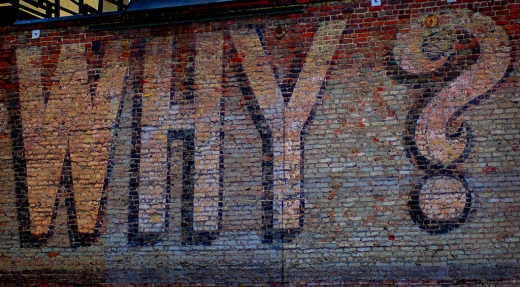Any parent or caregiver of young children will attest that kids love to ask “why”, often to the point of exasperation! Children are naturally curious and question everything that they see and hear – and often a short answer is not good enough. In fact, sometimes kids won’t stop asking follow-up “why”s to every answer they are given until the adult gives up altogether! The comedian Louis C.K. performs a hilarious segment about his own experiences with this phenomenon (warning: contains foul language).
Although I do not have my own children, as a museum educator I work with young people on a daily basis. I can empathize with parents and caregivers about how tiresome and frustrating constant questioning can be, especially when the reason seems so simple or obvious.

Courtesy of KarmenRose via Flickr.
Yet as a historian, I believe “why” is one of the most important words in the English language. It is fundamental to my practice as a researcher, heritage professional, and overall fulfilled human being. Questioning why certain things have been done in the past, why they have changed (or haven’t), and why we act and think as we do today can help provide the foundations for justice, equality, efficiency, and happiness.
In the context of a museum, gallery, or heritage site, encouraging young visitors to ask “why” is one of the most valuable things we can do as staff, teachers, parents, and guardians. Questions such as “Why are we learning about this?”; “Why was this place built?”; “Why aren’t we allowed to touch this?”; and “Why is this event/person/thing important to me?” are just some of the queries that can enhance a child’s understanding and encourage a lifelong love of learning.
It’s so important for museums and educators to show children that historical events as we comprehend and present them are not inevitable, natural narratives, but rather the results of deliberate human decisions, beliefs, and actions (or non-actions). By encouraging visitors of all ages to ask “why”, we not only encourage them to join us in the constant pursuit of greater historical understanding, but also to reflect on the norms and assumptions of modern society.

Courtesy of Marco Bellucci via Flickr.


